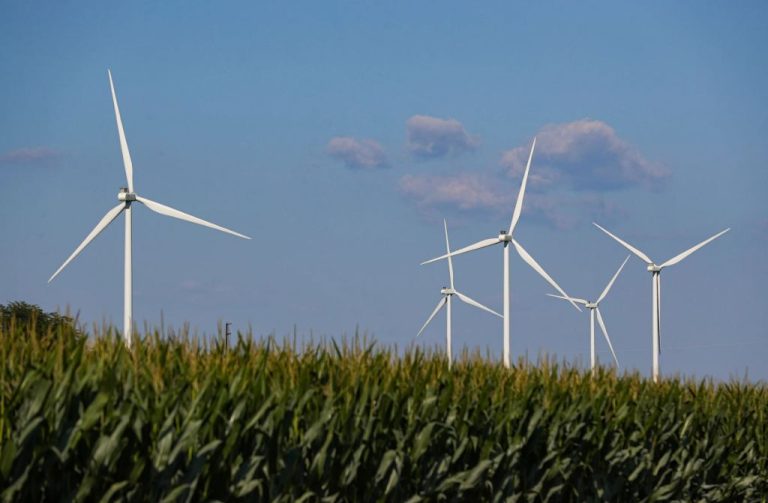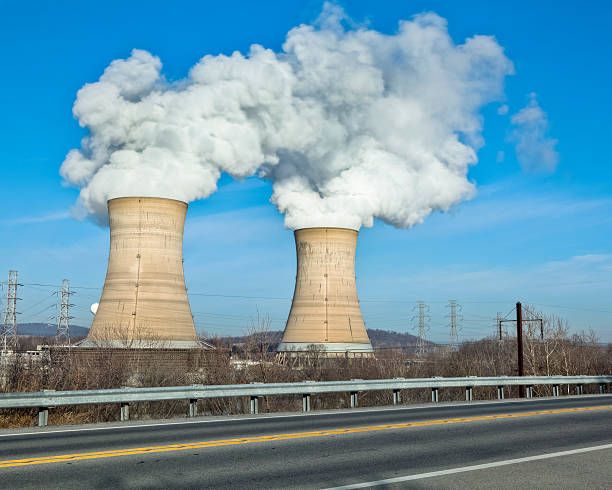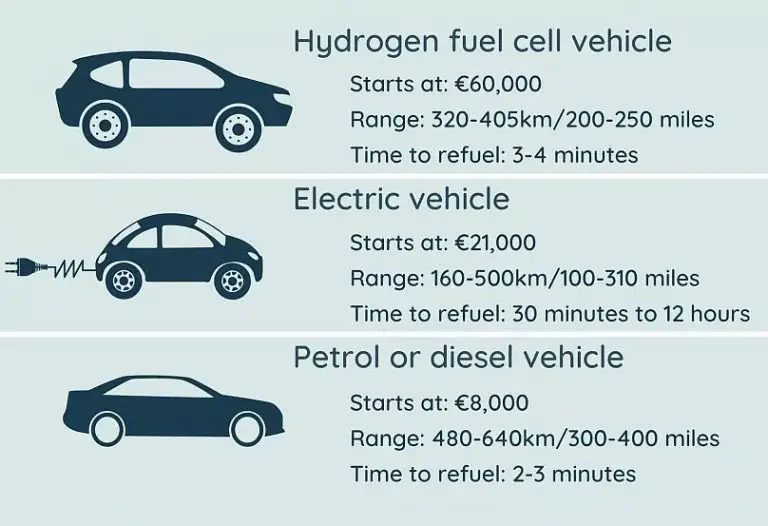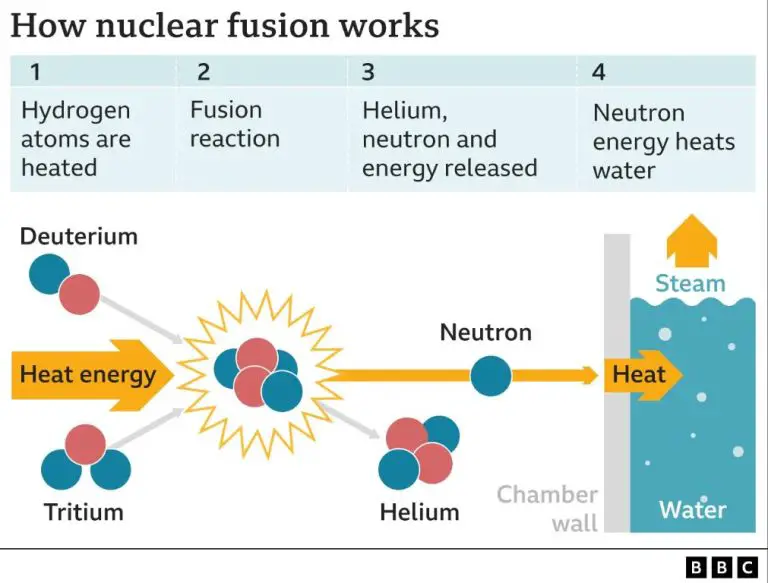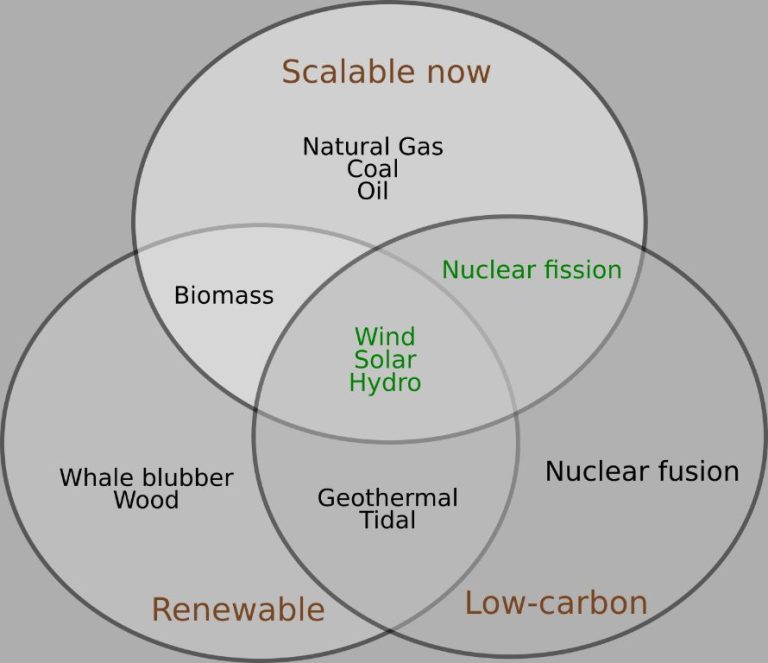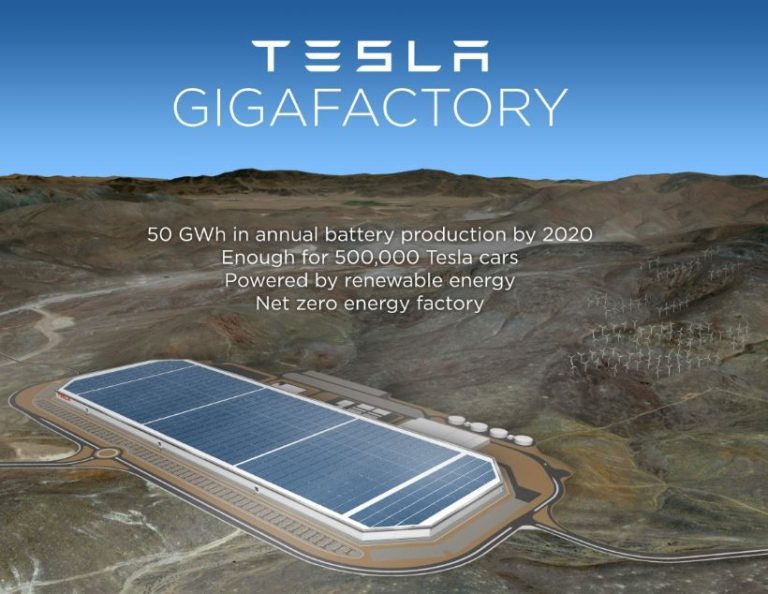What Are 4 Types Of Alternative Energy?
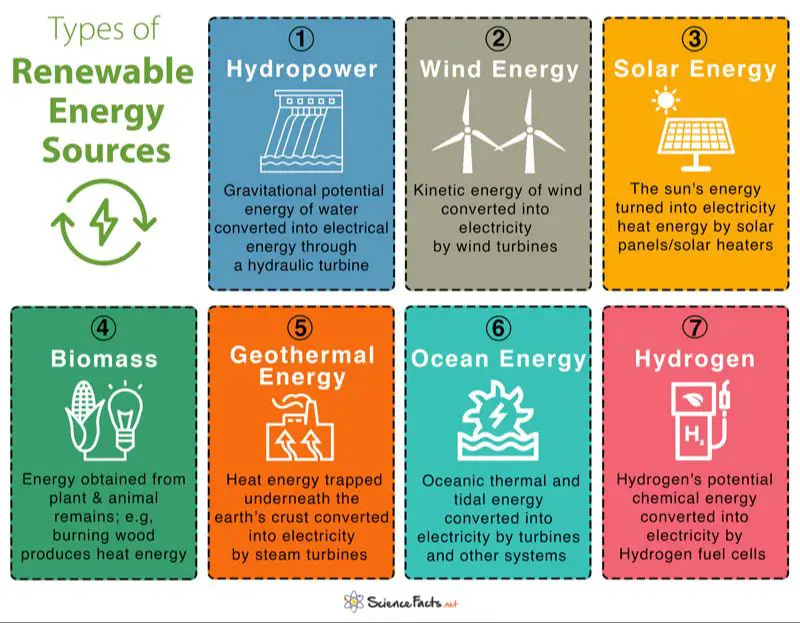
Alternative energy refers to energy sources that are renewable, sustainable, and environmentally friendly. Alternative energy is becoming increasingly important as traditional fossil fuels like oil, coal, and natural gas continue to be depleted. Alternative energy also produces fewer greenhouse gas emissions that contribute to climate change compared to burning fossil fuels. Some of the most common and promising alternative energy sources include solar power, wind power, hydroelectric power, geothermal power, and bioenergy.
In this article, we will provide an overview of four major types of alternative energy sources and technologies: solar power, wind power, hydroelectric power, and geothermal power. We will explore how each alternative energy source works, its advantages and disadvantages, latest developments and innovations, and the future outlook. Understanding various alternative energy options can help guide towards a more sustainable energy future.
Solar Power
Solar panels work by allowing particles of light, called photons, to knock electrons free from atoms, generating a flow of electricity. Solar cells are made up of photovoltaic (PV) materials like silicon that are capable of absorbing photons and releasing electrons. When these free electrons are captured, metal contacts on the solar cell transmit them, generating an electric current (source: Solar Industry Research Data | SEIA).
Some of the key pros of solar power include:
- Renewable – Solar energy comes from the sun, which will continue shining for billions of years.
- Reduces electricity bills – Once the solar system is paid off, owners can generate their own electricity for free.
- Low maintenance – Solar panels typically only need cleaning and occasional inspections/repairs.
- Improves energy security – Solar allows homes and businesses to generate their own power and reduce dependence on the grid.
Some potential cons include:
- High upfront cost – Purchasing and installing a solar system can be expensive.
- Intermittent power – Solar only generates electricity when the sun is shining.
- Space requirements – Solar arrays require unshaded space on rooftops or land.
Solar power is one of the fastest growing energy sources worldwide. The annual growth rate of solar has averaged 24% over the past decade (source: Solar Industry Research Data | SEIA). In 2021, solar accounted for 3% of U.S. electricity generation, up from 2% in 2020. Residential solar capacity is projected to more than triple over the next decade as costs continue to fall (source: EIA Annual Energy Outlook 2022).
Wind Power
Wind turbines use the kinetic energy in wind to generate clean and renewable electricity. As wind passes through the blades of a turbine, the blades spin, turning a rotor connected to a generator that converts the mechanical energy into electrical energy. Wind power does not produce any greenhouse gas emissions and is a sustainable energy source.
Some key pros of wind power include:
- It’s renewable and plentiful – wind will not run out and is widely available
- It produces no greenhouse gas emissions
- It’s cost-competitive with conventional sources
- It creates local jobs and other economic benefits
Some potential cons include:
- It can be intermittent and variable
- It produces low amounts of power at any given site
- It relies somewhat on backup power when wind speeds are low
- It can negatively impact birds and other wildlife
Global wind power capacity reached 743 GW by the end of 2021, led by growth in China and the United States. Total wind power generation was around 1,800 TWh. The levelized cost of energy from new wind power projects is now competitive with the cheapest fossil fuel options. Strong continued growth is expected in wind power deployment. Offshore wind in particular is a major growth area, with global capacity projected to rise from 34 GW in 2020 to over 234 GW by 2030 according to BloombergNEF.
Hydroelectric Power
Hydroelectric power utilizes the natural flow of water to generate electricity. A hydroelectric dam stores and controls the flow of water from higher to lower elevations through turbines connected to generators. As the water flows through the turbines, it rotates them and activates the generators to produce electricity.
According to the International Hydropower Association, hydropower provides around 16% of the world’s total electricity supply and over 60% of renewable electricity (source). One of the main advantages of hydroelectric power is its reliability as a renewable energy source. The flow of water can be controlled through reservoirs and dams, allowing electricity to be generated on demand. Hydroelectricity is also relatively low cost and does not generate direct waste or emissions.
However, there are also some disadvantages. Large hydroelectric dams and reservoirs can impact natural habitats, landscapes, and water flows. The initial construction costs of dams are high, and building new facilities often faces opposition. But modern hydro plants aim to mitigate environmental impacts through advanced designs. Small-scale “run-of-river” projects with smaller reservoirs reduce habitat disruption.
Currently, the top hydroelectric producers are China, Brazil, Canada, the United States, and Russia (source). Global hydro capacity expanded over 20% in the last decade and is projected for steady growth, especially in developing countries. With its reliability and low operating costs, hydroelectricity will continue providing significant renewable power worldwide.
Geothermal Power
Geothermal power plants use underground reservoirs of steam or hot water to generate electricity. The geothermal energy comes from the immense heat within the earth’s core. Wells can be drilled into underground reservoirs to tap steam and very hot water that drive turbines linked to electricity generators (https://kiwienergy.us/10-geothermal-energy-facts-and-examples/).
Geothermal power offers some key advantages. It provides continuous and reliable baseload power that is not subject to fluctuations like wind or solar power. Geothermal plants have very high capacity factors of 90-95%, meaning they can operate continuously at their full rated capacity. Geothermal energy is also considered renewable since the heat is replenished naturally. However, geothermal power is limited to areas with sufficient underground heat and water access. Drilling and power plant construction costs are high, and development can release harmful gases if not managed properly (https://css.umich.edu/publications/factsheets/energy/geothermal-energy-factsheet).
Global geothermal power capacity was around 15 GW in 2018, generating about 85 TWh of electricity annually. The United States is the largest producer with over 3.7 GW of installed capacity. Significant growth is expected in the coming years as technology improves and access to geothermal resources expands (https://www.greenmatch.co.uk/blog/2014/07/10-facts-about-geothermal-energy).
Bioenergy
Bioenergy converts biomass into useful forms of energy like fuel, heat, and electricity. Biomass refers to organic matter from plants and animals. Common sources of biomass include waste materials like crop residues, manure, and landfill gas as well as purpose-grown crops like switchgrass and fast-growing trees (U.S. Bioenergy Statistics).
There are several methods used to generate energy from biomass. Direct combustion involves burning biomass to produce heat and generate electricity. Biochemical conversion uses enzymes and microorganisms to break down biomass and produce gases or liquids like ethanol and biodiesel that can be used for fuel. Thermochemical conversion applies heat and pressure in the absence of oxygen to convert biomass into syngas or bio-oil (Bioenergy – IEA).
Some of the advantages of bioenergy include its renewable nature, reduction of waste, and lower net carbon emissions compared to fossil fuels. However, large-scale bioenergy production can compete for land and resources with food production. There are also concerns about the carbon impacts if biomass sources are not managed sustainably.
Global bioenergy supply reached 64 exajoules in 2020, meeting almost 15% of the world’s energy demand. Solid biomass like wood pellets accounted for 90% of bioenergy use. Liquid biofuels provided 7% of global road transport fuel. The International Energy Agency projects that modern bioenergy use could increase 25% by 2026 if supportive policies are enacted (GLOBAL BIOENERGY STATISTICS 2022).
Comparing the Options
When comparing different renewable energy sources, there are several factors to consider including efficiency, reliability, environmental impact, and costs. Here is an overview of the pros and cons of the major renewable energy options:
Solar power is very efficient and reliable in areas with high solar irradiation. The main drawbacks are the high upfront costs and dependence on sunny weather. However, costs have dropped dramatically in recent years making solar energy cost-competitive with fossil fuels. Solar has huge growth potential, especially with improvements in energy storage technology (Source).
Wind power can generate large amounts of electricity but its intermittent nature means it must be combined with other sources. Wind power is very scalable and has grown rapidly in recent decades. The main limitations are suitable wind sites and impacts on local wildlife. Offshore wind has huge untapped potential (Source).
Hydroelectric power provides reliable base load power. However, most suitable sites in developed countries have already been utilized. There is still potential to expand hydro capacity in developing nations. Hydroelectric can impact river ecosystems and is dependent on suitable geography and precipitation (Source).
Geothermal energy provides consistent base load power where available, but has geographical limitations and modest global capacity. Enhanced geothermal systems could expand potential. Environmental impacts include emissions of hydrogen sulfide and depletion of underground reservoirs over time if not properly managed.
Bioenergy can provide carbon neutral energy from organic waste streams, but some methods like corn ethanol have high life cycle emissions. There is potential for growth using cellulosic sources like crop residues or perennial grasses. However, bioenergy competes for land and water resources needed for food production.
Challenges
While renewable energy has seen tremendous growth, there are still significant challenges that need to be addressed for it to reach its full potential. Some of the main challenges include:
Financial costs – Building large-scale renewable energy projects such as wind farms or solar arrays requires major upfront investments. These projects may take years to recoup those costs, which can deter investment. Government subsidies have helped spur adoption, but renewables often still have higher direct costs than conventional energy sources.
Technical limitations – Most renewables like solar and wind provide intermittent power since they rely on the weather. Energy storage and smart grid technology can help overcome intermittency, but needs further development. There are also limitations around scaling up technologies, infrastructure constraints, and logistical challenges around siting large renewable installations.
Infrastructure needs – To tap into renewable sources, major upgrades are often needed for electricity transmission infrastructure, distribution grids, and connections between where renewable energy is generated and used. Building out this infrastructure is expensive and complex to integrate with legacy systems (IEA).
Future Outlook
The future growth and adoption of renewable energy looks promising, although policy and regulations will play a key role. According to the UN, renewable energy could supply up to 80 percent of the world’s electricity by 2050 if backed by the right enabling public policies (UN). The International Renewable Energy Agency (IRENA) projects that by 2050, 86% of global electricity could come from renewable sources given supportive policies and declines in renewable energy costs (UN).
Policy support like renewable portfolio standards, feed-in tariffs, and tax credits have helped drive growth so far and will continue being important for scaling adoption. Streamlining permitting and grid interconnection processes can also accelerate growth. According to projections, the global renewable energy market could grow at an annual rate of 6-8% through 2050 with the right regulatory environment (Earth.org).
The Paris Climate Agreement has also created policy momentum around the globe. Governments from over 190 countries have committed to clean energy development targets, which is spurring investment and growth in renewables (DOI). With continuing cost declines and supportive policies, renewable energy is expected to play a major role in decarbonizing the global economy this century.
Conclusion
In summary, there are several viable alternative energy sources that can help reduce our reliance on fossil fuels. Solar power harnesses energy from the sun using photovoltaic cells or solar thermal technology. Wind power utilizes large wind turbines to capture kinetic energy from wind. Hydropower leverages the flow of water, such as in dams, to generate electricity. Geothermal energy taps into the natural heat under the earth’s surface to produce renewable power. Bioenergy utilizes organic matter like plants and waste to create useful energy.
Expanding the use of these renewable energy sources provides numerous benefits. They produce much lower carbon emissions than fossil fuels, helping mitigate climate change. Alternative energy can also improve public health by reducing pollution. Many options like solar and wind are becoming cost competitive with conventional power. Investing in renewable energy creates jobs and spurs economic development. It increases energy security by relying on domestic resources. Overall, transitioning more of our energy mix to alternative sources will lead to a cleaner, safer, more sustainable future.

